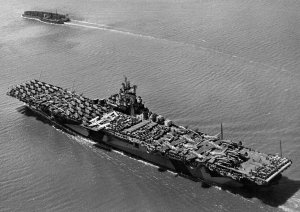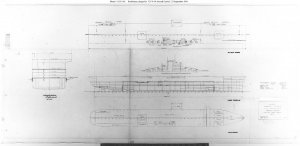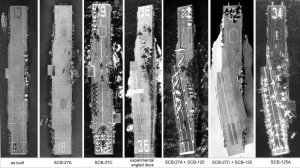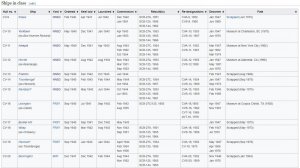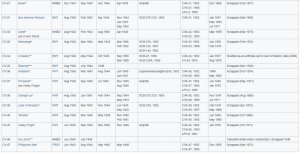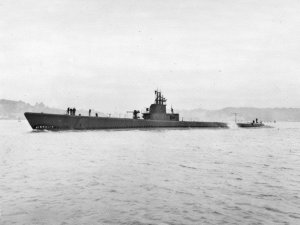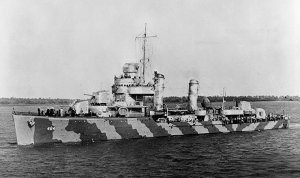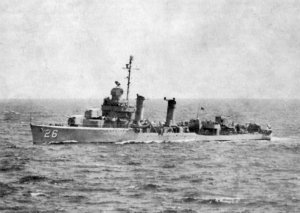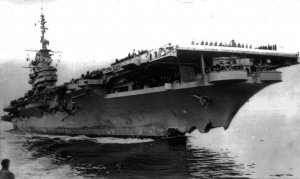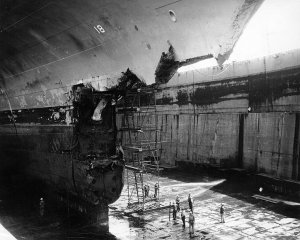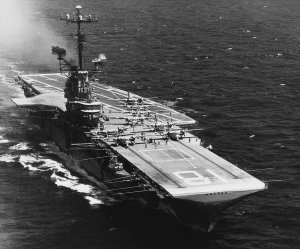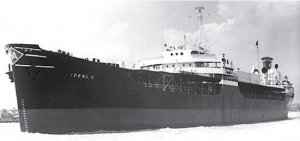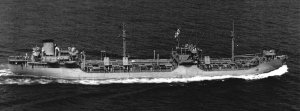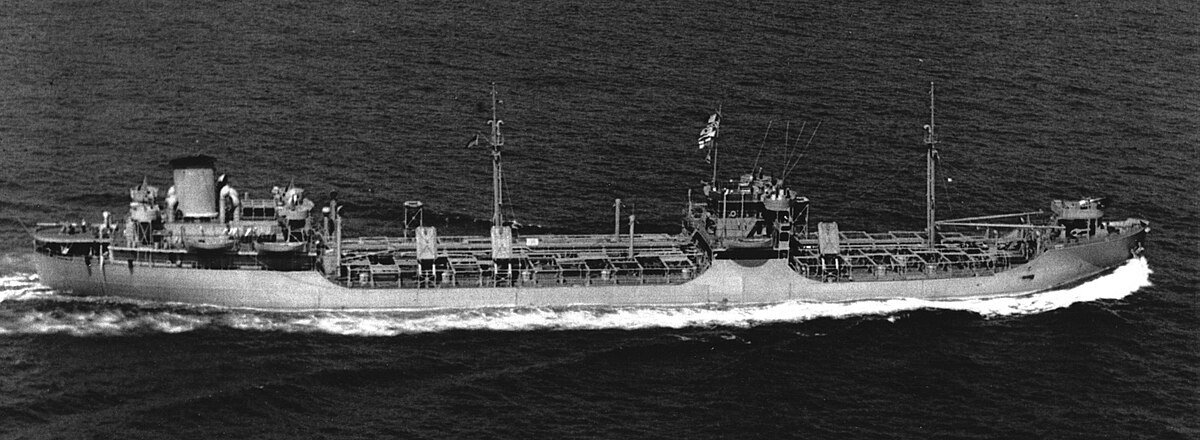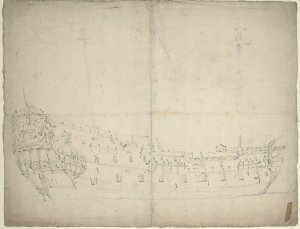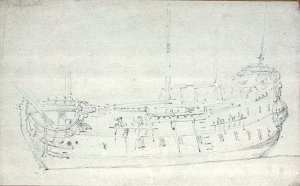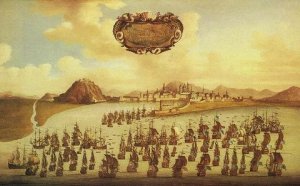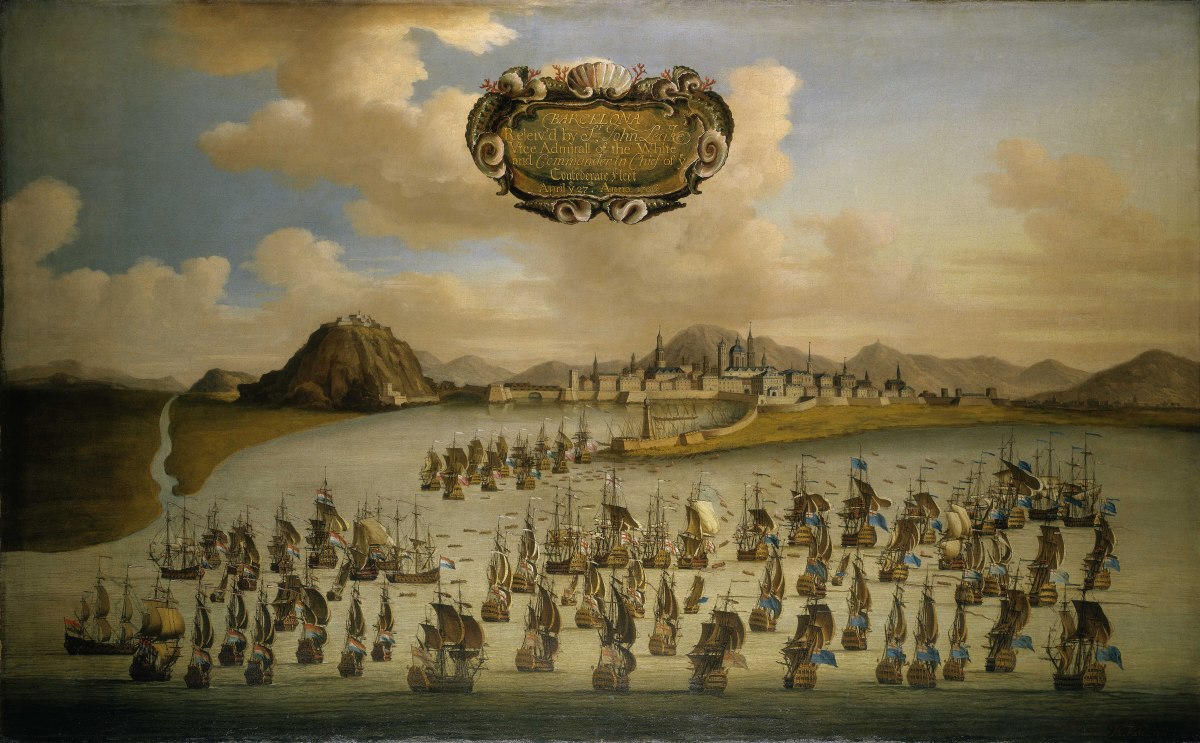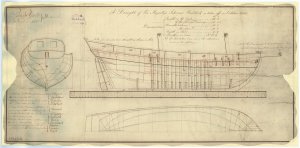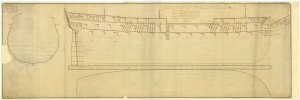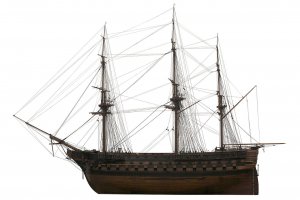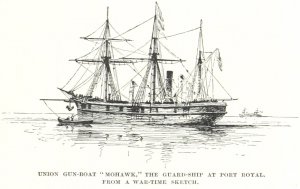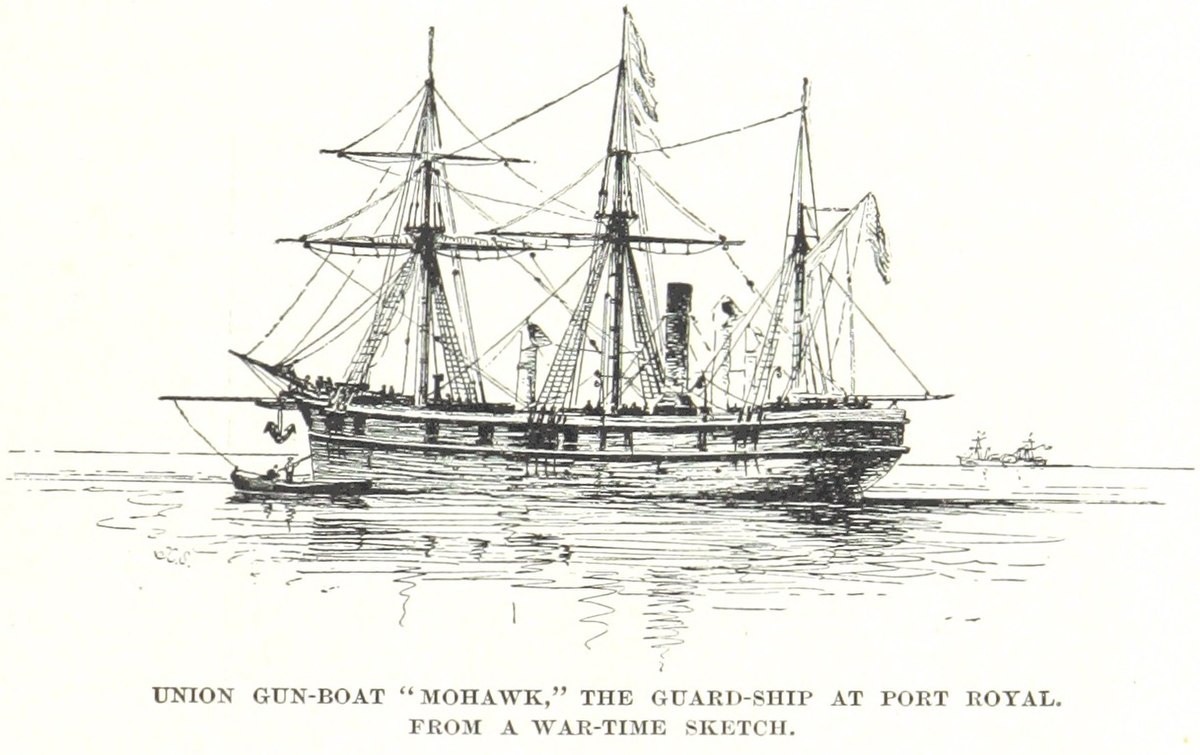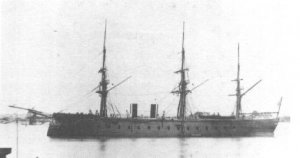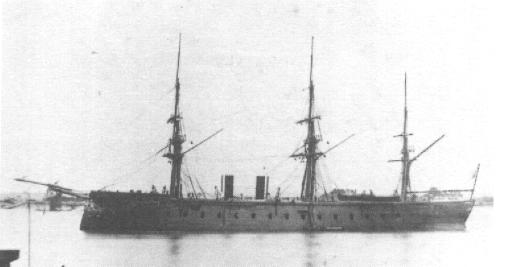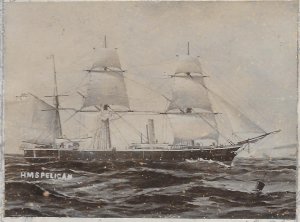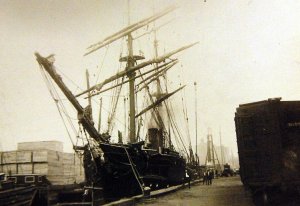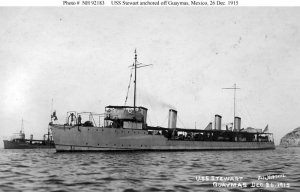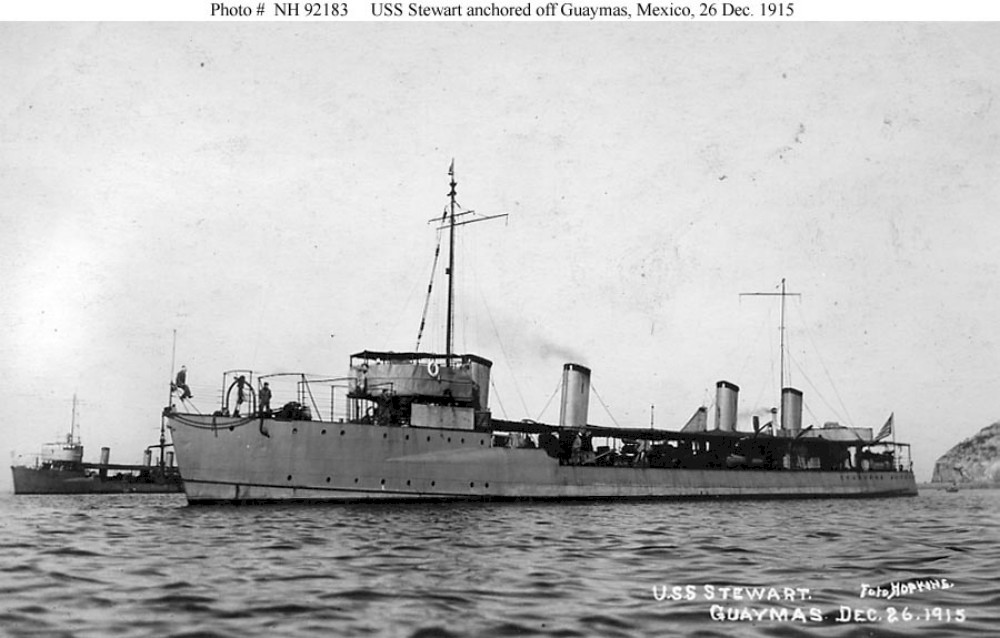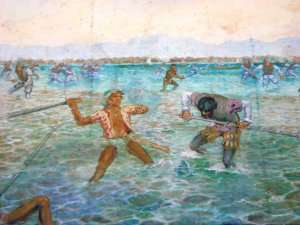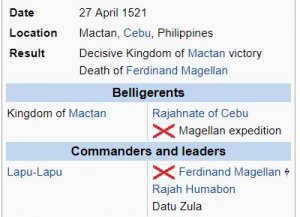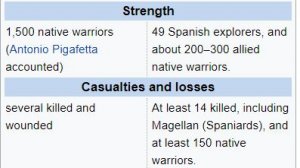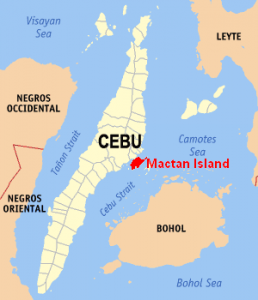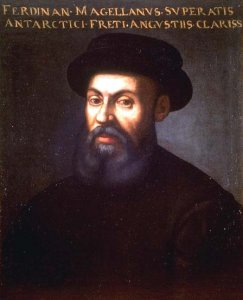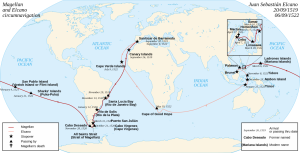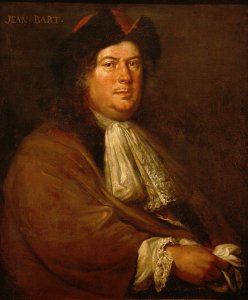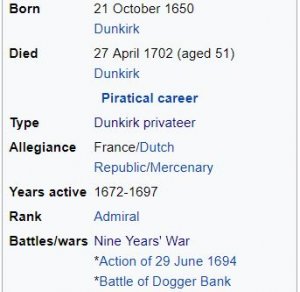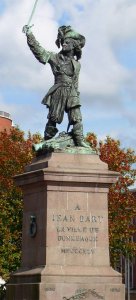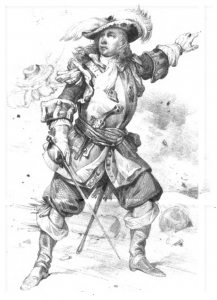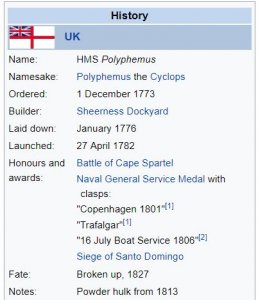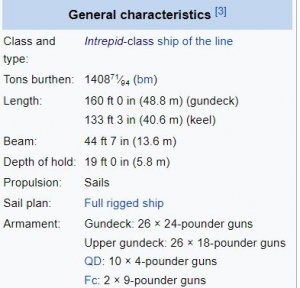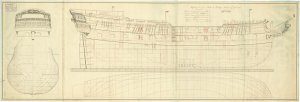Today in Naval History - Naval / Maritime Events in History
26 April 1607 - Late in 1606, English colonizers set sail with a charter from the London Company to establish a colony in the New World. The fleet consisted of the ships Susan Constant, Discovery, and Godspeed, all under the leadership of Captain Christopher Newport.
They made a particularly long voyage of four months, including a stop in the Canary Islands and subsequently Puerto Rico, and finally departed for the American mainland on April 10, 1607.
The expedition made landfall on April 26, 1607 at a place which they named Cape Henry, Chesapeake Bay, Mid of May they found Jamestown
The Jamestown settlement in the Colony of Virginia was the first permanent English settlement in the Americas. It was located on the east bank of the James (Powhatan) River about 2.5 mi (4 km) southwest of the center of modern Williamsburg. It was established by the Virginia Company of London as "James Fort" on May 4, 1607 O.S.;(May 14, 1607 N.S.), and was considered permanent after brief abandonment in 1610. It followed several failed attempts, including the Lost Colony of Roanoke, established in 1585 on Roanoke Island. Jamestown served as the capital of the colony of Virginia for 83 years, from 1616 until 1699.
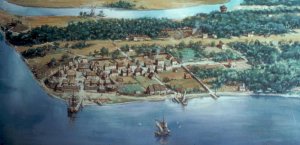
Colonial Jamestown About 1614
The settlement was located within the country of Tsenacommacah, which belonged to the Powhatan Confederacy, and specifically in that of the Paspaheghtribe. The natives initially welcomed and provided crucial provisions and support for the colonists, who were not agriculturally inclined. Relations soured fairly early on, however, leading to the total annihilation of the Paspahegh in warfare within three years. Mortality was very high at Jamestown itself due to disease and starvation, with over 80 percent of the colonists perishing in 1609–10 in what became known as the "Starving Time".
The Virginia Company brought eight Polish and German colonists in 1608 in the Second Supply, some of whom built a small glass factory—although the Germans and a few others soon defected to the Powhatans with weapons and supplies from the settlement. The Second Supply also brought the first two European women to the settlement. In 1619, the first documented Africans came to Jamestown—about 50 men, women, and children aboard a Portuguese slave ship that had been captured in the West Indies and brought to the Jamestown region. They most likely worked in the tobacco fields as indentured servants. The modern conception of slavery in the United States was formalized in 1640 (the John Punch hearing) and was fully entrenched in Virginia by 1660.
The London Company's second settlement in Bermuda claims to be the site of the oldest town in the English New World, as St. George's, Bermuda was officially established in 1612 as New London, whereas James Fort in Virginia was not converted into James Towne until 1619, and further did not survive to the present day. In 1676, Jamestown was deliberately burned during Bacon's Rebellion, though it was quickly rebuilt. In 1699, the capital was relocated from Jamestown to what is today Williamsburg, Virginia, after which Jamestown ceased to exist as a settlement, existing today only as an archaeological site.
Today, Jamestown is one of three locations composing the Historic Triangle of Colonial Virginia, along with Williamsburg and Yorktown, with two primary heritage sites. Historic Jamestowne is the archaeological site on Jamestown Island and is a cooperative effort by Jamestown National Historic Site (part of Colonial National Historical Park) and Preservation Virginia. Jamestown Settlement, a living history interpretive site, is operated by the Jamestown Yorktown Foundation, a state agency of the Commonwealth of Virginia.
Settlement
Main article: History of Jamestown, Virginia (1607–99)
See also: European colonization of the Americas and List of Jamestown colonists
Spain, Portugal, and France moved quickly to establish a presence in the New World, while other European countries moved more slowly. The English did not attempt to found colonies until many decades after the explorations of John Cabot, and early efforts were failures—most notably the Roanoke Colony which vanished about 1590.
Arrival and beginning (1607–1609)
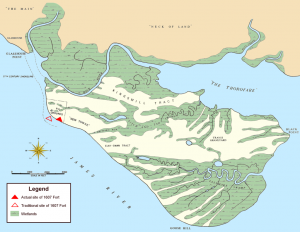
Map of Jamestown Island, showing the terrain and location of the original 1607 fort. (Modern roads, causeway, and buildings not shown)
Late in 1606, English colonizers set sail with a charter from the London Company to establish a colony in the New World. The fleet consisted of the ships Susan Constant, Discovery, and Godspeed, all under the leadership of Captain Christopher Newport. They made a particularly long voyage of four months, including a stop in the Canary Islands and subsequently Puerto Rico, and finally departed for the American mainland on April 10, 1607. The expedition made landfall on April 26, 1607 at a place which they named Cape Henry. Under orders to select a more secure location, they set about exploring what is now Hampton Roads and an outlet to the Chesapeake Bay which they named the James River in honor of King James I of England. Captain Edward Maria Wingfield was elected president of the governing council on April 25, 1607. On May 14, he selected a piece of land on a large peninsula some 40 miles (64 km) inland from the Atlantic Ocean as a prime location for a fortified settlement. The river channel was a defensible strategic point due to a curve in the river, and it was close to the land, making it navigable and offering enough land for piers or wharves to be built in the future.[18] Perhaps the most favorable fact about the location was that it was uninhabited because the leaders of the nearby indigenous nations considered the site too poor and remote for agriculture. The island was swampy and isolated, and it offered limited space, was plagued by mosquitoes, and afforded only brackish tidal river water unsuitable for drinking.
The Jamestown settlers arrived in Virginia during a severe drought, according to a research study conducted by the Jamestown Archaeological Assessment (JAA) team in the 1990s. The JAA analyzed information from a study conducted in 1985 by David Stahle and others, who obtained borings of 800 year-old baldcypress trees along the Nottoway and Blackwater rivers. The lifespan of these trees is up to 1,000 years and their rings offer a good indication of an area's annual amount of rainfall. The borings revealed that the worst drought in 700 years occurred between 1606 and 1612. This severe drought affected the Jamestown colonists and Powhatan tribe's ability to produce food and obtain a safe supply of water.
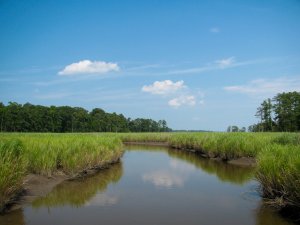
Salt marshes along Jamestown Island. The ample wetlands on the island proved to be a breeding ground for mosquitoes.
The settlers also arrived too late in the year to get crops planted. Many in the group were either gentlemen unused to work or their manservants, both equally unaccustomed to the hard labor demanded by the harsh task of carving out a viable colony. One of these was Robert Hunt, a former vicar of Reculver, England who celebrated the first known Eucharist in the territory of the future United States on June 21, 1607.
In a few months, 80% of the party were dead; some of the survivors were deserting to the Indians whose land they had colonized. Virginia Native Americans had established settlements long before the English settlers arrived, and there were an estimated 14,000 in the region who were politically known as Tsenacommacah and who spoke an Algonquian language. They were the Powhatan Confederacy, ruled by their paramount chief known as Wahunsenacawh or "Chief Powhatan". Wahunsenacawh initially sought to resettle the English colonists from Jamestown, considered part of Paspahegh territory, to another location known as Capahosick where they would make metal tools for him as members of his Confederacy, but this never happened.
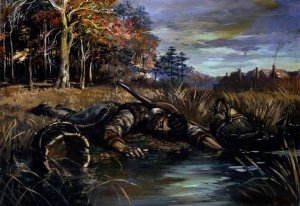
Jamestown settler dead in the swamp
The first explorers had been welcomed by the Indians with dancing, feasting, and tobacco ceremonies. Despite the hospitality of Wahunsenacawh, the presence of the English settlers and perhaps a further expedition up the James River by Captain Christopher Newport provoked the Paspahegh, Weyanock, and other groups to mount a series of attacks on the fort during a period of violence lasting from May 27 to July 14, 1607.
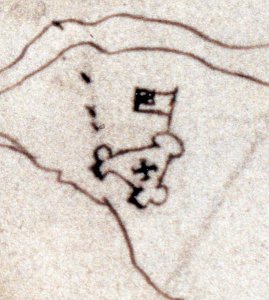
Detail of the map made by Pedro de Zúñiga, depicting the fort in about 1608
Two-thirds of the settlers died before ships arrived in 1608 with supplies and German, Polish, and Slovak craftsmen, who helped to establish the first manufactories in the colony. As a result, glassware became the foremost American products to be exported to Europe at the time. Clapboard had already been sent back to England beginning with the first returning ship.
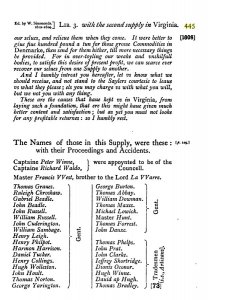
Names of those on the Second Supply - Page 445 (or Page 72)"The Generall Historie of Virginia, New-England, and the Summer Isles", by Capt. John Smith -
The delivery of supplies in 1608 on the First and Second Supply missions of Captain Newport had also added to the number of hungry settlers. It seemed certain at that time that the colony at Jamestown would meet the same fate as earlier English attempts to settle in North America, specifically the Roanoke Colony (Lost Colony) and the Popham Colony, unless there was a major relief effort. The Germans who arrived with the Second Supply and a few others defected to the Powhatans, with weapons and equipment. The Germans even planned to join a rumored Spanish attack on the colony and urged the Powhatans to join it. The Spanish were driven off by the timely arrival in July 1609 of Captain Samuel Argall in Mary and John, a larger ship than the Spanish reconnaissance ship La Asunción de Cristo. Argall's voyage also prevented the Spanish from gaining knowledge of the weakness of the colony. Don Pedro de Zúñiga, the Spanish ambassador to England, was desperately seeking this (in addition to spies) in order to get Philip III of Spain to authorise an attack on the colony.
The investors of the Virginia Company of London expected to reap rewards from their speculative investments. With the Second Supply, they expressed their frustrations and made demands upon the leaders of Jamestown in written form. They specifically demanded that the colonists send commodities sufficient to pay the cost of the voyage, a lump of gold, assurance that they had found the South Sea, and one member of the lost Roanoke Colony. It fell to the third president of the Council Captain John Smith to deliver a bold and much-needed wake-up call in response to the investors in London, demanding practical laborers and craftsmen who could help make the colony more self-sufficient.
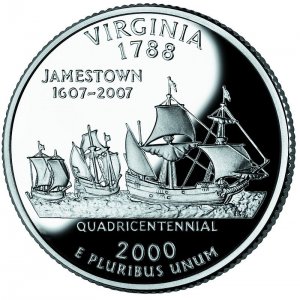
Susan Constant, Godspeed, and Discovery, commemorated on the Virginia State Quarter
Susan Constant, captained by Christopher Newport, was the largest of three ships of the English Virginia Company (the others being Discovery and Godspeed) on the 1606–1607 voyage that resulted in the founding of Jamestown in the new Colony of Virginia.
History
Susan Constant was rated at 120 tons. Its keel length is estimated at 55.2 feet (16.8 meters). The overall length from tip to stern is estimated at 116 feet (35 m).
On the 1606–1607 voyage, it carried 71 colonists, all male, including John Smith. On June 22, 1607, Christopher Newport sailed back for London with Susan Constant and Godspeed carrying a load of supposedly precious minerals, leaving behind the 104 colonists and Discovery (to be used in exploring the area).
Susan Constant, which had been a rental ship that had customarily been used as a freight transport, did not return to Virginia again. She later served as a merchant ship through at least 1615. Its fate is unknown.
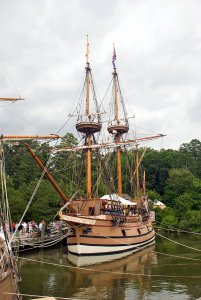
Replica of Susan Constant (built 1989)
Discovery or Discoverie was a small 20-ton, 38-foot (12 m) long "fly-boat" of the British East India Company, launched before 1602. It was one of the three ships (along with Susan Constant and Godspeed) on the 1606–07 voyage to the New World for the English Virginia Company of London. The journey resulted in the founding of Jamestown in the new Colony of Virginia.
Godspeed, under Captain Bartholomew Gosnold, was one of the three ships (along with Susan Constant and Discovery) on the 1606-1607 voyage to the New World for the English Virginia Company of London. The journey resulted in the founding of Jamestown in the new Colony of Virginia.
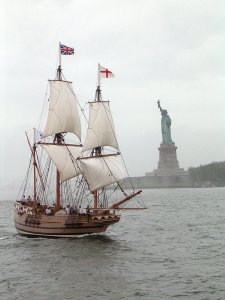
Replica of Godspeed in New York City in 2006
https://en.wikipedia.org/wiki/Jamestown,_Virginia
ttps://en.wikipedia.org/wiki/Christopher_Newport
https://en.wikipedia.org/wiki/Susan_Constant
https://en.wikipedia.org/wiki/Discovery_(1602_ship)
https://en.wikipedia.org/wiki/Godspeed_(ship)
26 April 1607 - Late in 1606, English colonizers set sail with a charter from the London Company to establish a colony in the New World. The fleet consisted of the ships Susan Constant, Discovery, and Godspeed, all under the leadership of Captain Christopher Newport.
They made a particularly long voyage of four months, including a stop in the Canary Islands and subsequently Puerto Rico, and finally departed for the American mainland on April 10, 1607.
The expedition made landfall on April 26, 1607 at a place which they named Cape Henry, Chesapeake Bay, Mid of May they found Jamestown
The Jamestown settlement in the Colony of Virginia was the first permanent English settlement in the Americas. It was located on the east bank of the James (Powhatan) River about 2.5 mi (4 km) southwest of the center of modern Williamsburg. It was established by the Virginia Company of London as "James Fort" on May 4, 1607 O.S.;(May 14, 1607 N.S.), and was considered permanent after brief abandonment in 1610. It followed several failed attempts, including the Lost Colony of Roanoke, established in 1585 on Roanoke Island. Jamestown served as the capital of the colony of Virginia for 83 years, from 1616 until 1699.

Colonial Jamestown About 1614
The settlement was located within the country of Tsenacommacah, which belonged to the Powhatan Confederacy, and specifically in that of the Paspaheghtribe. The natives initially welcomed and provided crucial provisions and support for the colonists, who were not agriculturally inclined. Relations soured fairly early on, however, leading to the total annihilation of the Paspahegh in warfare within three years. Mortality was very high at Jamestown itself due to disease and starvation, with over 80 percent of the colonists perishing in 1609–10 in what became known as the "Starving Time".
The Virginia Company brought eight Polish and German colonists in 1608 in the Second Supply, some of whom built a small glass factory—although the Germans and a few others soon defected to the Powhatans with weapons and supplies from the settlement. The Second Supply also brought the first two European women to the settlement. In 1619, the first documented Africans came to Jamestown—about 50 men, women, and children aboard a Portuguese slave ship that had been captured in the West Indies and brought to the Jamestown region. They most likely worked in the tobacco fields as indentured servants. The modern conception of slavery in the United States was formalized in 1640 (the John Punch hearing) and was fully entrenched in Virginia by 1660.
The London Company's second settlement in Bermuda claims to be the site of the oldest town in the English New World, as St. George's, Bermuda was officially established in 1612 as New London, whereas James Fort in Virginia was not converted into James Towne until 1619, and further did not survive to the present day. In 1676, Jamestown was deliberately burned during Bacon's Rebellion, though it was quickly rebuilt. In 1699, the capital was relocated from Jamestown to what is today Williamsburg, Virginia, after which Jamestown ceased to exist as a settlement, existing today only as an archaeological site.
Today, Jamestown is one of three locations composing the Historic Triangle of Colonial Virginia, along with Williamsburg and Yorktown, with two primary heritage sites. Historic Jamestowne is the archaeological site on Jamestown Island and is a cooperative effort by Jamestown National Historic Site (part of Colonial National Historical Park) and Preservation Virginia. Jamestown Settlement, a living history interpretive site, is operated by the Jamestown Yorktown Foundation, a state agency of the Commonwealth of Virginia.
Settlement
Main article: History of Jamestown, Virginia (1607–99)
See also: European colonization of the Americas and List of Jamestown colonists
Spain, Portugal, and France moved quickly to establish a presence in the New World, while other European countries moved more slowly. The English did not attempt to found colonies until many decades after the explorations of John Cabot, and early efforts were failures—most notably the Roanoke Colony which vanished about 1590.
Arrival and beginning (1607–1609)

Map of Jamestown Island, showing the terrain and location of the original 1607 fort. (Modern roads, causeway, and buildings not shown)
Late in 1606, English colonizers set sail with a charter from the London Company to establish a colony in the New World. The fleet consisted of the ships Susan Constant, Discovery, and Godspeed, all under the leadership of Captain Christopher Newport. They made a particularly long voyage of four months, including a stop in the Canary Islands and subsequently Puerto Rico, and finally departed for the American mainland on April 10, 1607. The expedition made landfall on April 26, 1607 at a place which they named Cape Henry. Under orders to select a more secure location, they set about exploring what is now Hampton Roads and an outlet to the Chesapeake Bay which they named the James River in honor of King James I of England. Captain Edward Maria Wingfield was elected president of the governing council on April 25, 1607. On May 14, he selected a piece of land on a large peninsula some 40 miles (64 km) inland from the Atlantic Ocean as a prime location for a fortified settlement. The river channel was a defensible strategic point due to a curve in the river, and it was close to the land, making it navigable and offering enough land for piers or wharves to be built in the future.[18] Perhaps the most favorable fact about the location was that it was uninhabited because the leaders of the nearby indigenous nations considered the site too poor and remote for agriculture. The island was swampy and isolated, and it offered limited space, was plagued by mosquitoes, and afforded only brackish tidal river water unsuitable for drinking.
The Jamestown settlers arrived in Virginia during a severe drought, according to a research study conducted by the Jamestown Archaeological Assessment (JAA) team in the 1990s. The JAA analyzed information from a study conducted in 1985 by David Stahle and others, who obtained borings of 800 year-old baldcypress trees along the Nottoway and Blackwater rivers. The lifespan of these trees is up to 1,000 years and their rings offer a good indication of an area's annual amount of rainfall. The borings revealed that the worst drought in 700 years occurred between 1606 and 1612. This severe drought affected the Jamestown colonists and Powhatan tribe's ability to produce food and obtain a safe supply of water.

Salt marshes along Jamestown Island. The ample wetlands on the island proved to be a breeding ground for mosquitoes.
The settlers also arrived too late in the year to get crops planted. Many in the group were either gentlemen unused to work or their manservants, both equally unaccustomed to the hard labor demanded by the harsh task of carving out a viable colony. One of these was Robert Hunt, a former vicar of Reculver, England who celebrated the first known Eucharist in the territory of the future United States on June 21, 1607.
In a few months, 80% of the party were dead; some of the survivors were deserting to the Indians whose land they had colonized. Virginia Native Americans had established settlements long before the English settlers arrived, and there were an estimated 14,000 in the region who were politically known as Tsenacommacah and who spoke an Algonquian language. They were the Powhatan Confederacy, ruled by their paramount chief known as Wahunsenacawh or "Chief Powhatan". Wahunsenacawh initially sought to resettle the English colonists from Jamestown, considered part of Paspahegh territory, to another location known as Capahosick where they would make metal tools for him as members of his Confederacy, but this never happened.

Jamestown settler dead in the swamp
The first explorers had been welcomed by the Indians with dancing, feasting, and tobacco ceremonies. Despite the hospitality of Wahunsenacawh, the presence of the English settlers and perhaps a further expedition up the James River by Captain Christopher Newport provoked the Paspahegh, Weyanock, and other groups to mount a series of attacks on the fort during a period of violence lasting from May 27 to July 14, 1607.

Detail of the map made by Pedro de Zúñiga, depicting the fort in about 1608
Two-thirds of the settlers died before ships arrived in 1608 with supplies and German, Polish, and Slovak craftsmen, who helped to establish the first manufactories in the colony. As a result, glassware became the foremost American products to be exported to Europe at the time. Clapboard had already been sent back to England beginning with the first returning ship.

Names of those on the Second Supply - Page 445 (or Page 72)"The Generall Historie of Virginia, New-England, and the Summer Isles", by Capt. John Smith -
The delivery of supplies in 1608 on the First and Second Supply missions of Captain Newport had also added to the number of hungry settlers. It seemed certain at that time that the colony at Jamestown would meet the same fate as earlier English attempts to settle in North America, specifically the Roanoke Colony (Lost Colony) and the Popham Colony, unless there was a major relief effort. The Germans who arrived with the Second Supply and a few others defected to the Powhatans, with weapons and equipment. The Germans even planned to join a rumored Spanish attack on the colony and urged the Powhatans to join it. The Spanish were driven off by the timely arrival in July 1609 of Captain Samuel Argall in Mary and John, a larger ship than the Spanish reconnaissance ship La Asunción de Cristo. Argall's voyage also prevented the Spanish from gaining knowledge of the weakness of the colony. Don Pedro de Zúñiga, the Spanish ambassador to England, was desperately seeking this (in addition to spies) in order to get Philip III of Spain to authorise an attack on the colony.
The investors of the Virginia Company of London expected to reap rewards from their speculative investments. With the Second Supply, they expressed their frustrations and made demands upon the leaders of Jamestown in written form. They specifically demanded that the colonists send commodities sufficient to pay the cost of the voyage, a lump of gold, assurance that they had found the South Sea, and one member of the lost Roanoke Colony. It fell to the third president of the Council Captain John Smith to deliver a bold and much-needed wake-up call in response to the investors in London, demanding practical laborers and craftsmen who could help make the colony more self-sufficient.

Susan Constant, Godspeed, and Discovery, commemorated on the Virginia State Quarter
Susan Constant, captained by Christopher Newport, was the largest of three ships of the English Virginia Company (the others being Discovery and Godspeed) on the 1606–1607 voyage that resulted in the founding of Jamestown in the new Colony of Virginia.
History
Susan Constant was rated at 120 tons. Its keel length is estimated at 55.2 feet (16.8 meters). The overall length from tip to stern is estimated at 116 feet (35 m).
On the 1606–1607 voyage, it carried 71 colonists, all male, including John Smith. On June 22, 1607, Christopher Newport sailed back for London with Susan Constant and Godspeed carrying a load of supposedly precious minerals, leaving behind the 104 colonists and Discovery (to be used in exploring the area).
Susan Constant, which had been a rental ship that had customarily been used as a freight transport, did not return to Virginia again. She later served as a merchant ship through at least 1615. Its fate is unknown.

Replica of Susan Constant (built 1989)
Discovery or Discoverie was a small 20-ton, 38-foot (12 m) long "fly-boat" of the British East India Company, launched before 1602. It was one of the three ships (along with Susan Constant and Godspeed) on the 1606–07 voyage to the New World for the English Virginia Company of London. The journey resulted in the founding of Jamestown in the new Colony of Virginia.
Godspeed, under Captain Bartholomew Gosnold, was one of the three ships (along with Susan Constant and Discovery) on the 1606-1607 voyage to the New World for the English Virginia Company of London. The journey resulted in the founding of Jamestown in the new Colony of Virginia.

Replica of Godspeed in New York City in 2006
https://en.wikipedia.org/wiki/Jamestown,_Virginia
ttps://en.wikipedia.org/wiki/Christopher_Newport
https://en.wikipedia.org/wiki/Susan_Constant
https://en.wikipedia.org/wiki/Discovery_(1602_ship)
https://en.wikipedia.org/wiki/Godspeed_(ship)




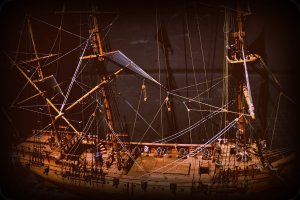

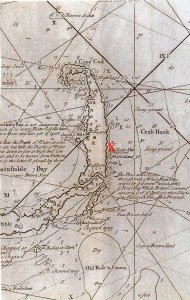
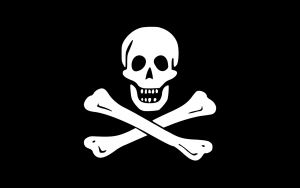
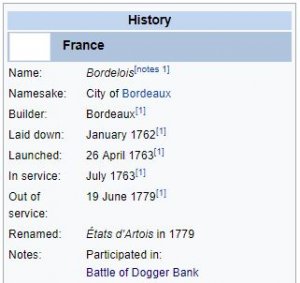

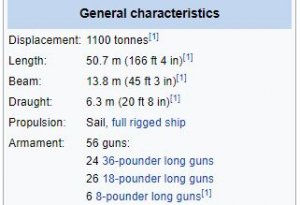

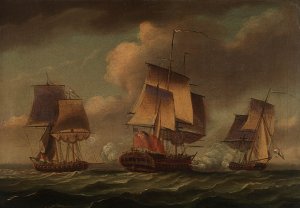
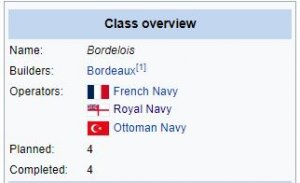

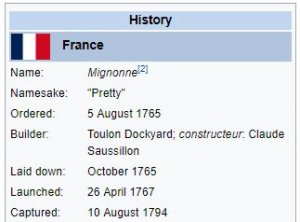

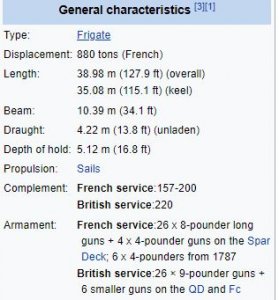
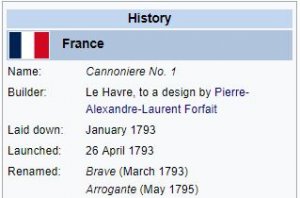
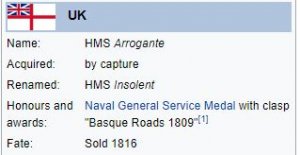
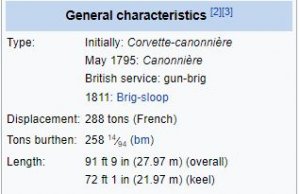
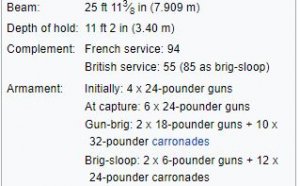
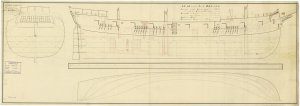
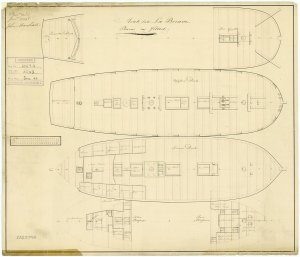
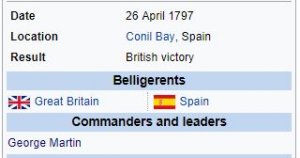
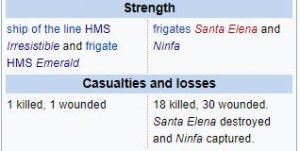
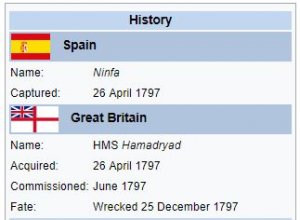
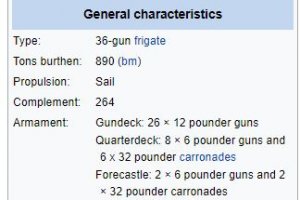
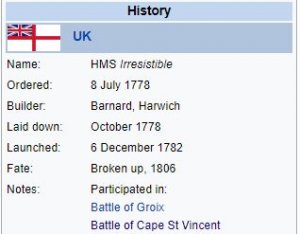
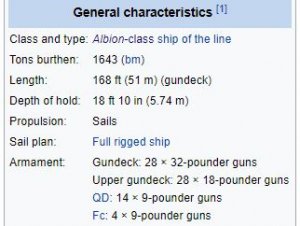

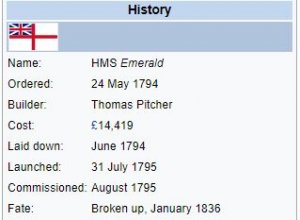
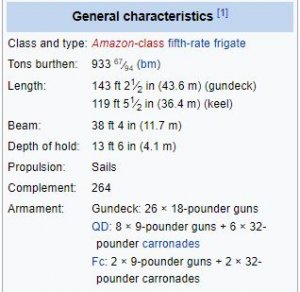
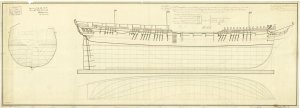
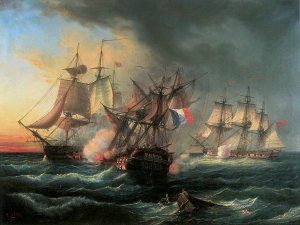
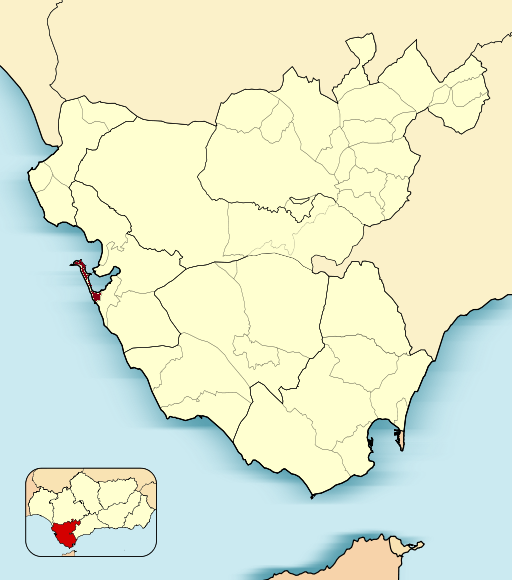
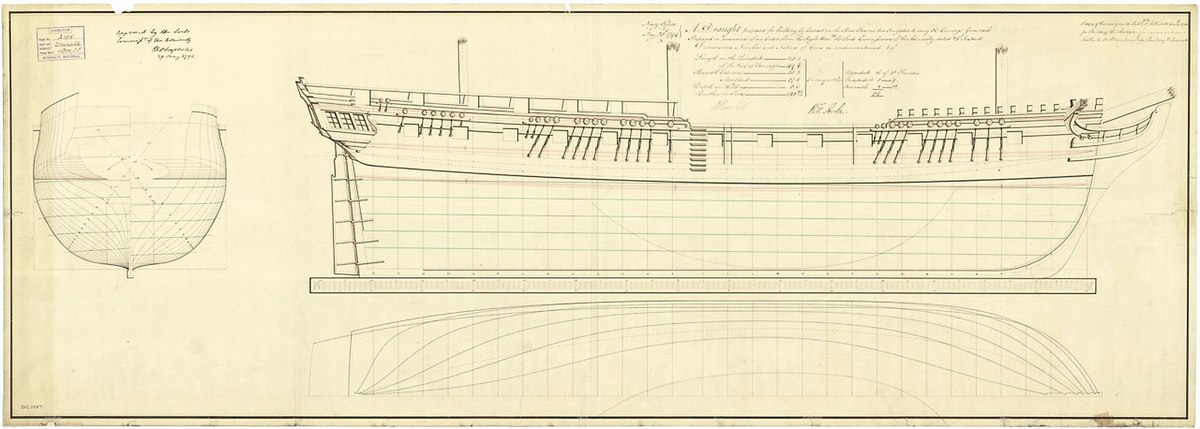
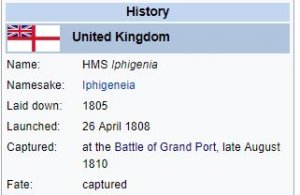


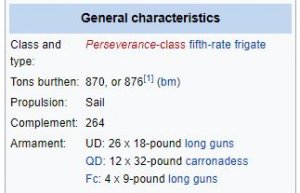
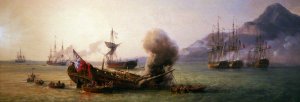
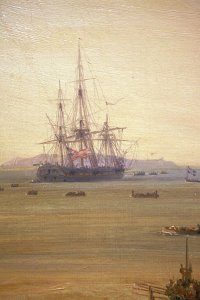
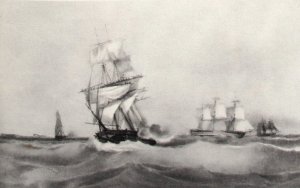
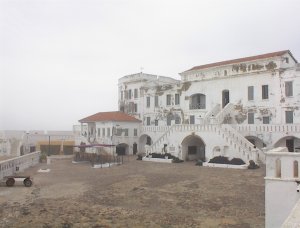
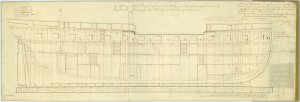
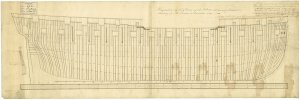

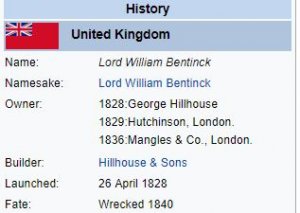
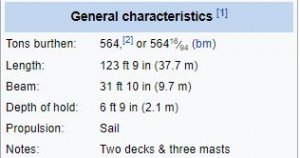
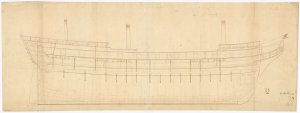

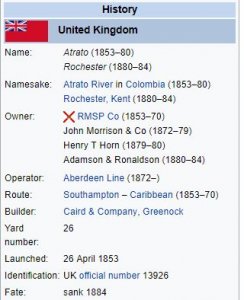
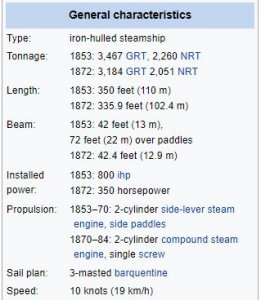
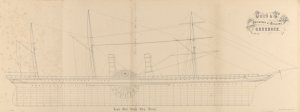
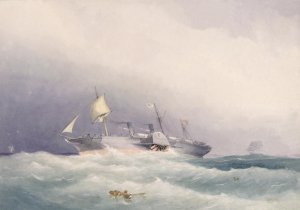
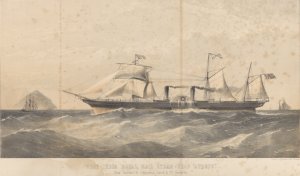
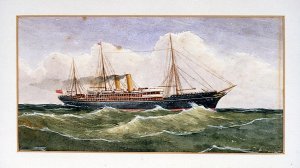
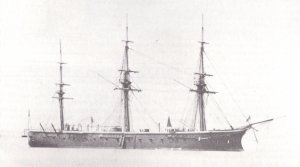
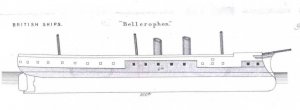
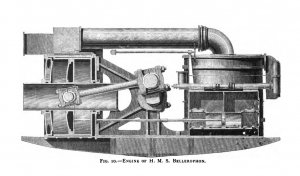
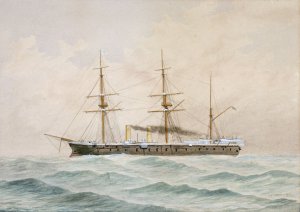
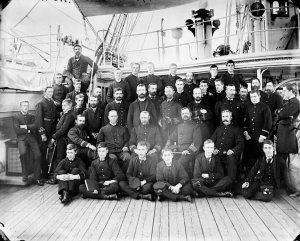

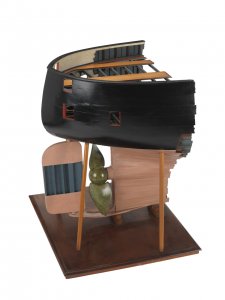
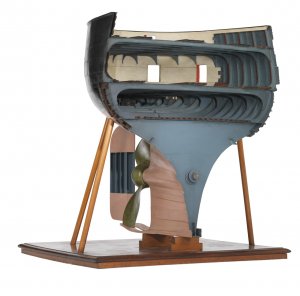
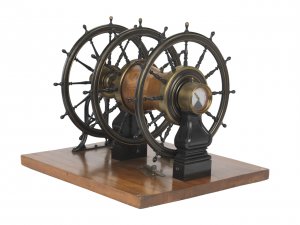
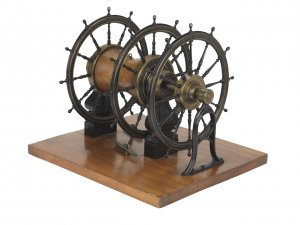
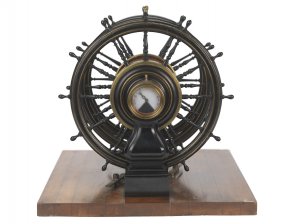
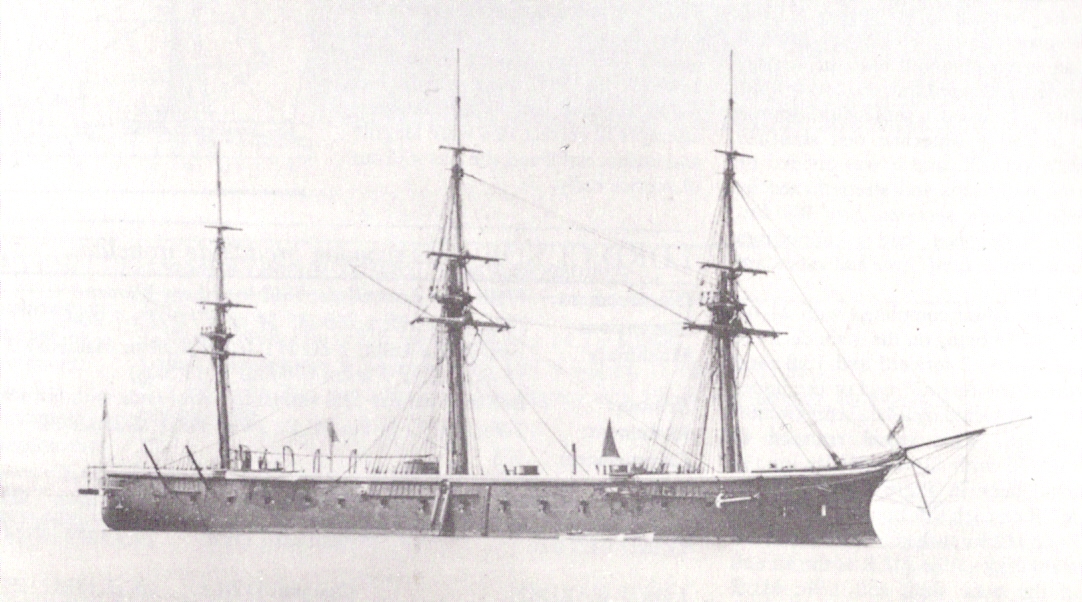
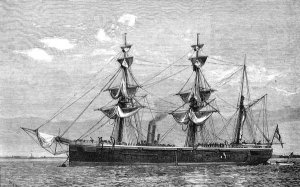
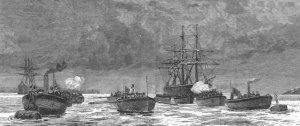
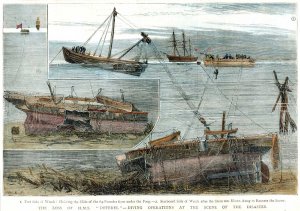
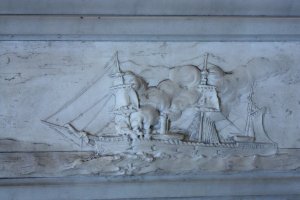
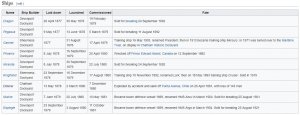
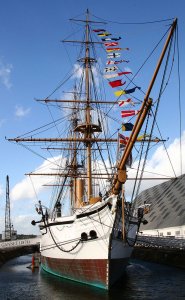
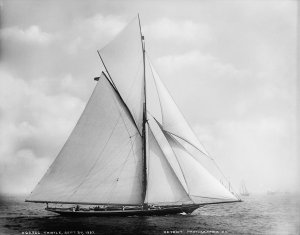
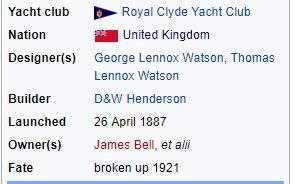
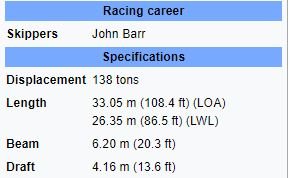
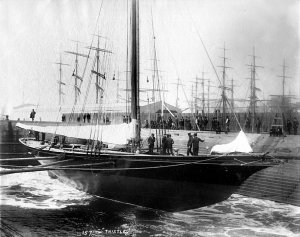
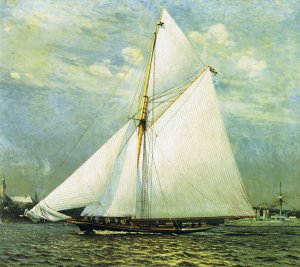
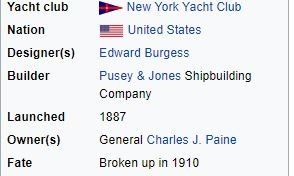
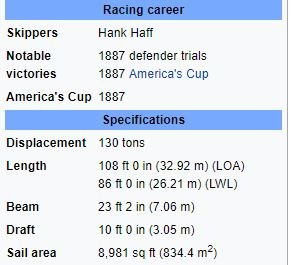
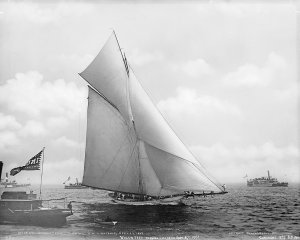
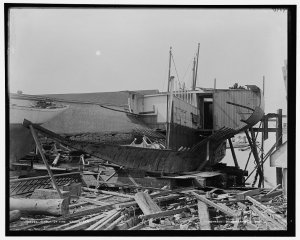
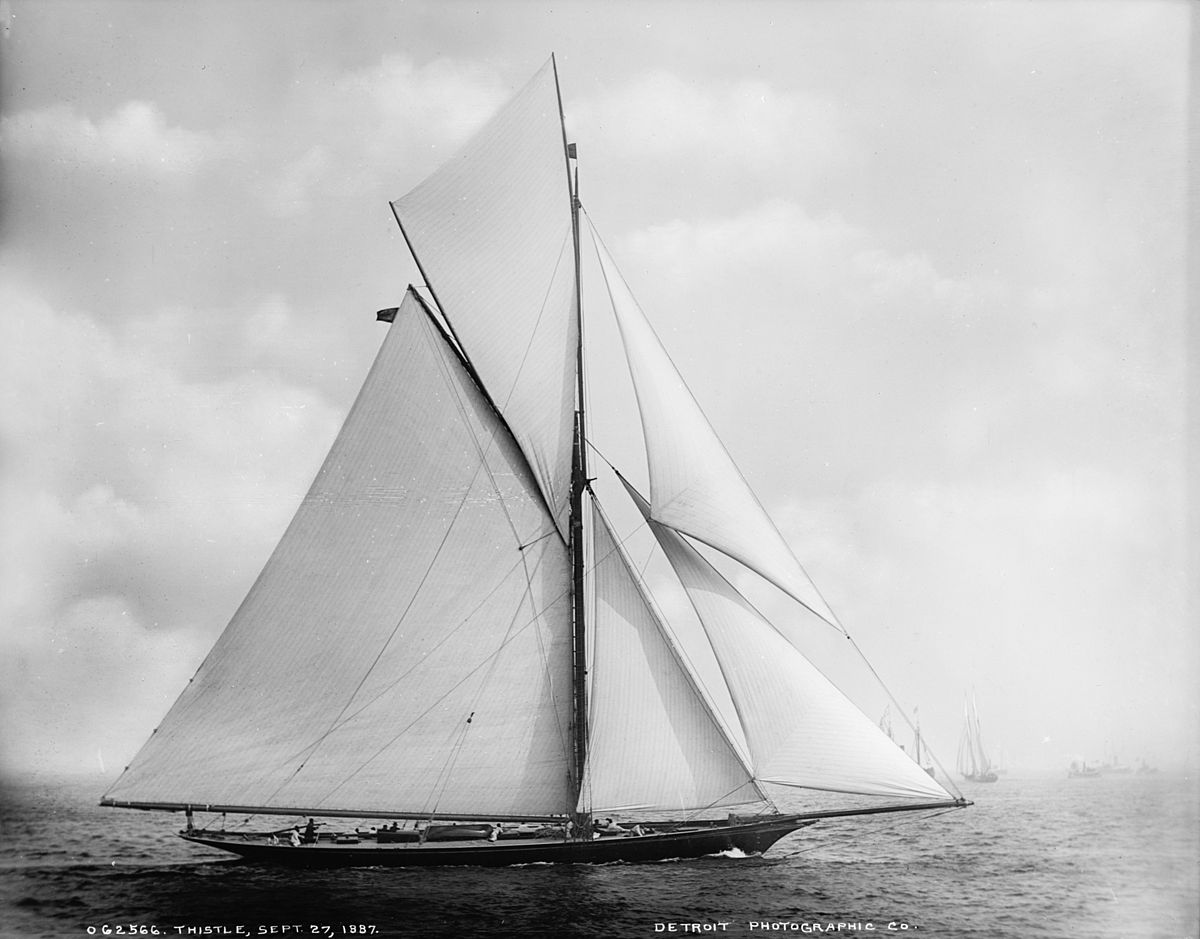
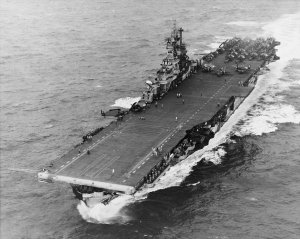
 Shipbuilding & Dry Dock Co.
Shipbuilding & Dry Dock Co.